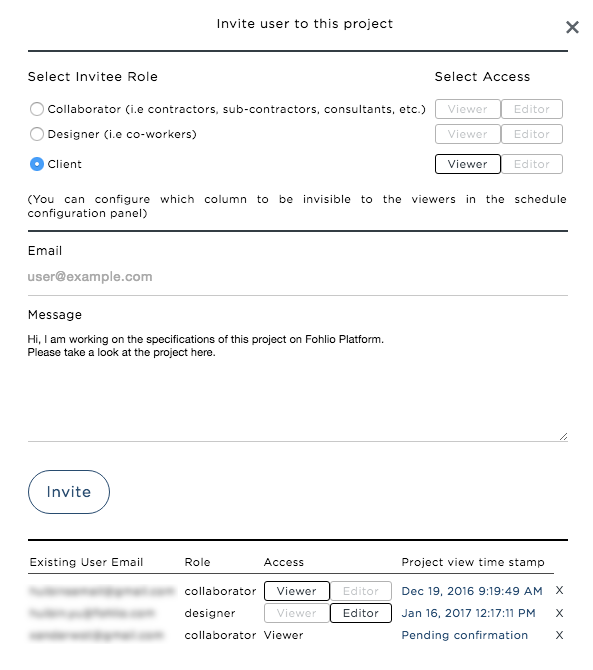
A majority of design professionals find working with couples extremely hard because it is quite easy to fall into the trap of becoming a part-time family psychologist. And because they’re home renovation projects, they can, and often do, get very personal.
Here is where our design and architectural skills often need to take a backseat to interpersonal and (admittedly amateur) psychological skills. We’ve put together a list of common problematic scenarios and how you can deal with them.
Home Renovation With Couples: Common Problems and How to Deal
1. Expensive tastes with low budgets

Wanting the best materials and items for our homes is totally expected, but one of the most common issues with couples is that they quite often have a very different understanding of what the best is and how much they can afford.
Anybody, who has ever been in serious relationships, knows how difficult is to manage a shared budget. Even if you haven’t experienced it yourself, doing a design for a family is the best way to see all the extremes, fights and manipulations to get the control over a family budget. Of course, it is not your job to stop family fights, but it is in your interests to be as efficient as possible and not let them block your project and waste your time (and therefore money).
Solution:
There are a few things you can do to address this. First and foremost, make sure you have project priorities agreed upon. Set aside part of the budget for some extra expenses. And if you get trapped into a fight when your customers argue on whether they should go into a more expensive version of the couch or not, don’t forget to remind them about their initial priorities or offer to spend those extra budget savings on this upgrade.
A wise piece of advice here is not to take anybody’s side, but help your customers find the balance with a minimum of your time taken.
2. Decorate it all over

There’s a saying that men are from Mars and women are from Venus. There’s also that popular stereotype of men preferring minimalism, while women lean more towards flashy or showy. Whether you subscribe to these beliefs or not, you’ll find that as long as there’s more than one person involved in a home renovation project, there will be a clash in tastes and preferences. And with you being the neutral party, you’ll likely find yourself in the role of referee, with the possibility of one or the other hating you for not favoring them.
Solution:
The first rule: Don’t panic. Of course, this type of couple will make your work harder, but it’s not the end of the world. If you come up with the controversial requirements, try taking the least controversial parts of both of them and organizing them into an accommodating design.
If you can’t find a compromise solution, try to give each member a certain area of control: Let one define the color scheme and the other go for furniture selection. Again, talking about their aims and priorities in design helps a lot.
3. We’ve changed our mind

Another typical problem of couples exists where critical design conversations and, more likely, disagreements, are discussed behind closed doors without your involvement. As a result, you get plenty of change requests.
Solution:
Before even starting the project, agree on the amount of amendment sessions included into the scope (this is a good practice for any type of client). This agreement will at least protect you financially. Another good practice is to discuss reasons for any change requests that are introduced.
Explain to your customers that this way, it will be easier for any participant of the process to share the same vision. As a result, this would let you minimize the amount of changes introduced and manage them right away. By reminding the thought process upon which the previous solution was accepted, you will be able to protect those parts of the design that you find most important, as well as to call upon the logical side instead of the emotional.
4. Don’t tell anyone

Another side of the couples that are not ready for open discussion is that they will try to approach you separately, without telling their better half, in order to put their own wishes forward. As a result, you’ll having clashing ideas on your hands and even more work to do.
Solution:
The best thing you can do here is to make the spec as transparent as possible. You can use professional software like Fohlio. Its Smart Web Clipper helps you easily collect product information from any webpage into professional specification list with simple clicks.

It allows sharing whole or part of specification with the interested parties. You can even see if and when your client last review the specs.
Make the home renovation process transparent and don’t let yourself be engaged into family problems. Even sending a short follow up after each meeting will help you to avoid the avalanche of changes and keep the right tone of your meetings.
As you see, doing family design is not the easiest path. It would require from you your best political and psychological skills, but with some experience and our pieces of advice, you will manage to get it right.
Expore Fohlio
Learn how to:
- Save days of work with faster specification
- Create firm-wide design standards
- Automate and centralize procurement
- Keep your whole team on the same Page
- Manage product data
- Track budget against cost in real time.
- Prepare for asset valuation
Published Jan 23, 2017


